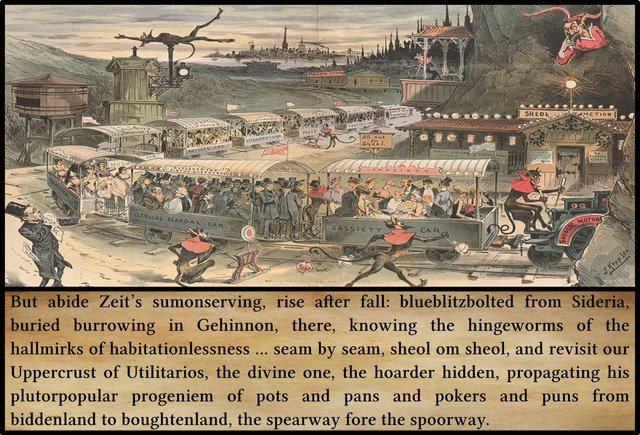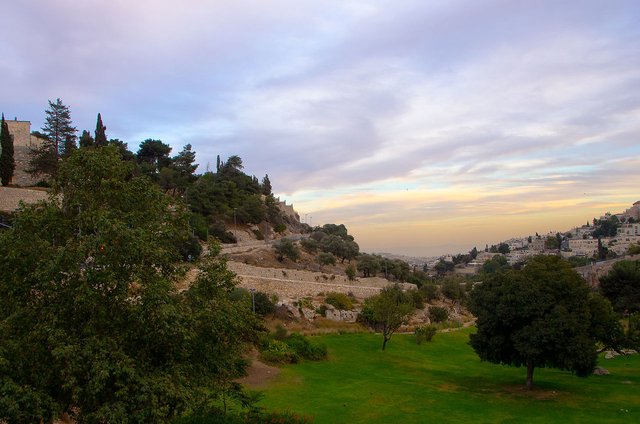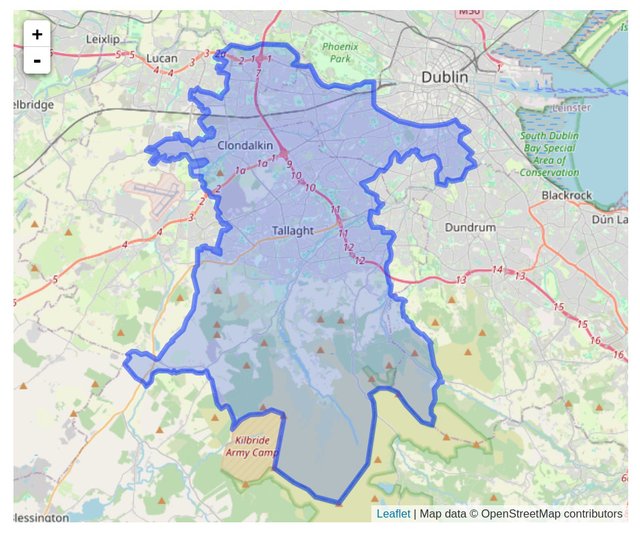But abide Zeit’s sumonserving

The opening paragraphs of Chapter I.4 of James Joyce’s Finnegans Wake describe the death of HCE and his burial in a tomb at the bottom of Lough Neagh. This section comes to a close with a short paragraph prophesying his rise from the dead―the inevitable consequence of death in the context of Giambattista Vico’s cyclical philosophy of history.
First-Draft Version
Like the two preceding paragraphs, this one was omitted when Joyce first drafted this chapter in November 1923. But unlike them it was also absent when an early draft of the chapter was published by Eugene Jolas & Elliot Paul in issue 4 of their literary journal transition on 1 July 1927. In the early 1930’s, however, Joyce revised this passage by marking up his copy of transition 4. This draft (identified by Rose & O’Hanlon as draft level 8) included the following lines:
But abide Zeit’s sumonserving, rise after fall: blueblitzbolted from Onhigh, buried burrowing in Gehinnon, to proliferate through all his Unterwealth, seam by seam, sheol om sheol, and revisit the Uppercrust, the divine one, the hoarder hidden, propagating his plutorpopular progeniem of pots and pans and pokers and puns. (James Joyce Digital Archive)
The final changes were made when Joyce was preparing the galley proofs for Finnegans Wake in the late 1930’s. Note that the version published in 1939 is different from that found in The Restored Finnegans Wake, which Rose & O’Hanlon published in 2010. Most of their changes involved the repositioning of text within the paragraph, rather than the introduction of new text.

blueblitzbolted from Sideria, buried burrowing in Gehinnon ... to proliferate through all his Unterwealth, seam by seam, ... sheol om sheol, and revisit our Uppercrust of Utilitarios
- German Blitz : a bolt of lightning. Roland McHugh’s Annotations to Finnegans Wake also gives German blitzblau : black and blue
In Finnegans Wake the thunderbolt represents the voice of God announcing the start of a new Viconian cycle. It comes as a bolt from the blue after the waters of the flood have abated:
482. ... The French say bleu for “blue,” and since blue is a term of sense perception they must have meant by “bleu” the sky; and, just as the gentile nations used “sky” for Jove, the French must have used bleu for God in that impious oath of theirs, moure bleu!, “God’s death!”; and they still say “parbleu!”, “by God!” ―Giambattista Vico, The New Science (1744) §482 (Bergin & Fisch 144–145)
But there is also another allusion here, which draws on the following note in one of the earliest Finnegans Wake notebooks, Scribbledehobble:
Greeks believe thunderbolts form mines, gehinnon, sheol, unter welt, eden (VI.A:1h : Connolly 5)
- Gehinnom or Gehenna is a sort of Jewish Hell or Underworld, a place where the wicked are punished. The name means Valley of Hinnom and originally referred to a place near Jerusalem. There is also the German geh : go! and hinnen : hence, from here. The bolt has been withdrawn, the door of HCE’s tomb has turned on its hinge, and HCE has bolted.

Sheol refers to a similar concept, an abode of the dead in the Bible. It was not necessarily a place of punishment. Nor was it reserved for the wicked.
German Unterwelt : Underworld, Hell. Also -wealth echoes the theme of treasure buried in water that has been flowing through these paragraphs: Alaric and Attila’s watery graves, Wagner’s Rhinegold and the Nibelungenlied of German mythology. plutorpopular also reminds us that while Pluto was the Roman god of the Underworld, the similarly named Plutus was the Roman god of wealth. seam by seam conveys the same sense.
Ancient Greek σιδηρεῖα : iron-mines. Also the 1939 version has Uppercrust Sideria, which refers to Upper Silesia, a region in central Europe famous for its iron mines. In the years after the First World War, it was the site of political and ethnic unrest. Following a plebiscite in 1921, it was divided between Germany and Poland. Annotations also suggests Siberia, another notorious place of exile. Uppercross is the name of a barony in the south of County Dublin:
Chapelizod, a village partly in Palmerstown parish, Uppercross barony, but chiefly in the parish of the same name, Castleknock barony. ―Thom’s Directory
HCE would like to see himself as part of the upper crust―the aristocracy. When he returns to the Earth’s upper crust, he will, like Dante emerging from the Inferno, behold again the starry sphere. Hence the Latin siderea : starry. But why the Spanish utilitarios or Portuguese utilitários : utilitarian (masculine plural)? I also have no idea where Joyce picked up the tidbit about the ancient Greeks believing that mines were created by thunderbolts.

propagating his plutorpopular progeniem ... from biddenland to boughtenland, the spearway fore the spoorway
These words seem to warn us that when history repeats itself in the following paragraphs, it will initially do so not by literally raising HCE from his grave. Rather, HCE’s history will be first recapitulated in his sons:
propagate : to give rise to offspring
Latin progeniem : progeny, offspring, lineage (accusative singular)
spear-side & spindle-side : the male and female lines of descent. Also, the L/R shift gives us spool, a synonym for spindle. Finally, there is the Dutch spoorweg : railway, the underground railroad, perhaps, which will facilitate HCE’s speedy return to the world of the living.
The only other Dutch expression in this paragraph is: in binnenland en buitenland : at home and abroad. bid- and bought- also echo the commercial elements of the previous paragraph, in which HCE’s worldly goods were flogged off. John Gordon suggests that pots and pans and pokers and puns imply that the items for sale in HCE’s grocery―HCE’s pup is also a general store―are also up for grabs (Gordon 78.12–13)

And that’s as good a place as any to beach the bark of our tale.
References
- Goddard Bergin & Max Harold Fisch (translators), The New Science of Giambattista Vico, Third Edition (1744), Cornell University Press, Ithaca, New York (1948)
- Thomas Edmund Connolly (editor), James Joyce’s Scribbledehobble: The Ur-Workbook for Finnegans Wake, Edited with Notes and an Introduction, Northwestern University Press, Evanston, Illinois (1961)
- Eugene Jolas & Elliot Paul (editors), transition, Number 3, Shakespeare & Co, Paris (1927)
- James Joyce, Finnegans Wake, The Viking Press, New York (1958, 1966)
- James Joyce, James Joyce: The Complete Works, Pynch (editor), Online (2013)
- Roland McHugh, Annotations to Finnegans Wake, Third Edition, The Johns Hopkins University Press, Baltimore, Maryland (2006)
- Leon Pompa (translator), Vico: The First New Science, Cambridge University Press, Cambridge (2002)
- Danis Rose, John O’Hanlon, The Restored Finnegans Wake, Penguin Classics, London (2012)
Image Credits
- Rapid Transit to Sheol: Joseph Ferdinand Keppler (artist), puck_ (1888), Cornell University Library, Ithaca, New York, Public Domain
- Differences between FW 078.07–14 and RFW 062.21–27: © Raphael Slepon (editor), The Finnegans Wake Extensible Elucidation Treasury (FWEET) Website, Fair Use
- The Valley of Hinnom: © Michal Levinsky (photographer), Creative Commons License
- Uppercross Barony: © OpenStreetMap Contributors, Open Database License
- Humphrey’s Pub and Grocery in Ranelagh, Dublin: Copyright Unknown, Fair Use
Useful Resources
- FWEET
- Jorn Barger: Robotwisdom
- Joyce Tools
- The James Joyce Scholars’ Collection
- FinnegansWiki
- James Joyce Digital Archive
- John Gordon’s Finnegans Wake Blog
